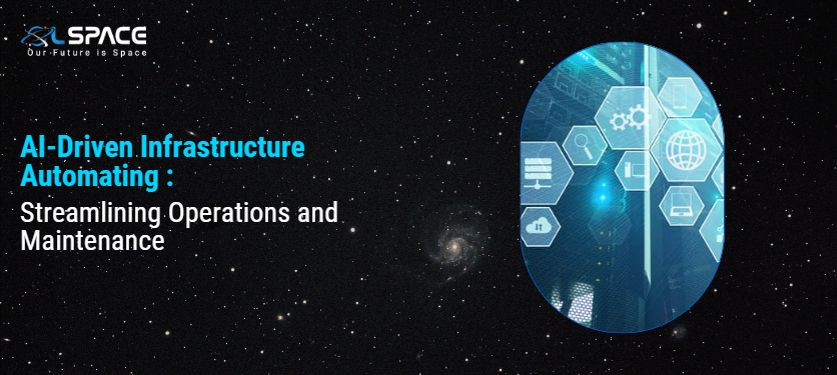30 May 2023
AI-Driven Infrastructure Automation: Streamlining Operations and Maintenance

As technology continues to advance, organizations are increasingly turning to automation to streamline their operations and improve efficiency. In the realm of infrastructure management, AI-driven automation has emerged as a powerful tool for optimizing operations and maintenance processes. By harnessing the capabilities of artificial intelligence, organizations can achieve higher productivity, cost savings, and enhanced reliability. In this blog, we will explore the benefits and applications of AI-driven infrastructure automation, highlighting how it can revolutionize the way we manage and maintain critical systems.
Intelligent Asset Monitoring and Predictive Maintenance: AI-driven automation enables intelligent monitoring of infrastructure assets, such as machinery, equipment, and networks. Through the collection and analysis of vast amounts of data, AI algorithms can identify patterns and anomalies that indicate potential issues or failure risks. This allows for predictive maintenance, where maintenance activities are scheduled proactively based on real-time data, minimizing downtime and reducing the likelihood of costly equipment failures.
Optimized Resource Allocation: With AI-driven automation, organizations can optimize the allocation of resources, including personnel, materials, and energy. By analyzing historical data and real-time information, AI algorithms can make intelligent decisions regarding resource allocation, ensuring that the right resources are deployed at the right time and in the most efficient manner. This leads to improved resource utilization, cost savings, and increased operational efficiency.
Enhanced Incident Detection and Response: AI automation can significantly improve incident detection and response in infrastructure management. Through real-time monitoring and analysis of data streams from various sensors and systems, AI algorithms can identify anomalies, security breaches, or performance issues. Automated alerts and notifications enable timely responses, allowing organizations to address incidents promptly and minimize their impact on operations.
Intelligent Energy Management: Energy consumption is a critical aspect of infrastructure operations. AI-driven automation can optimize energy management by analyzing data on energy usage patterns, demand, and cost. By leveraging machine learning algorithms, organizations can identify energy-saving opportunities, implement intelligent scheduling and load balancing, and optimize energy consumption without compromising operational requirements. This results in reduced energy costs, increased sustainability, and a smaller environmental footprint.
Streamlined Decision-Making: AI-driven automation provides decision-makers with real-time insights and recommendations based on data analysis. By leveraging machine learning and predictive analytics, organizations can make data-driven decisions in areas such as maintenance planning, resource allocation, and risk management. The ability to analyze large volumes of data and generate actionable insights empowers decision-makers to make informed choices that optimize infrastructure operations.
Improved Safety and Risk Mitigation: AI-driven automation enhances safety by continuously monitoring infrastructure assets and systems. By detecting potential safety hazards, such as equipment malfunctions or environmental risks, AI algorithms can trigger automated safety protocols, issue alerts, and initiate appropriate responses. This proactive approach to safety mitigates risks and protects personnel, infrastructure, and the surrounding environment.
Conclusion: AI-driven infrastructure automation holds tremendous potential for streamlining operations and maintenance in the modern era. By leveraging AI algorithms, organizations can optimize asset monitoring, predict maintenance needs, allocate resources efficiently, detect and respond to incidents promptly, manage energy consumption intelligently, streamline decision-making, and enhance safety. The benefits of AI-driven automation include increased productivity, cost savings, improved reliability, and enhanced sustainability. As organizations continue to adopt and refine AI technologies, the future of infrastructure management is poised to be more efficient, resilient, and intelligent than ever before.
